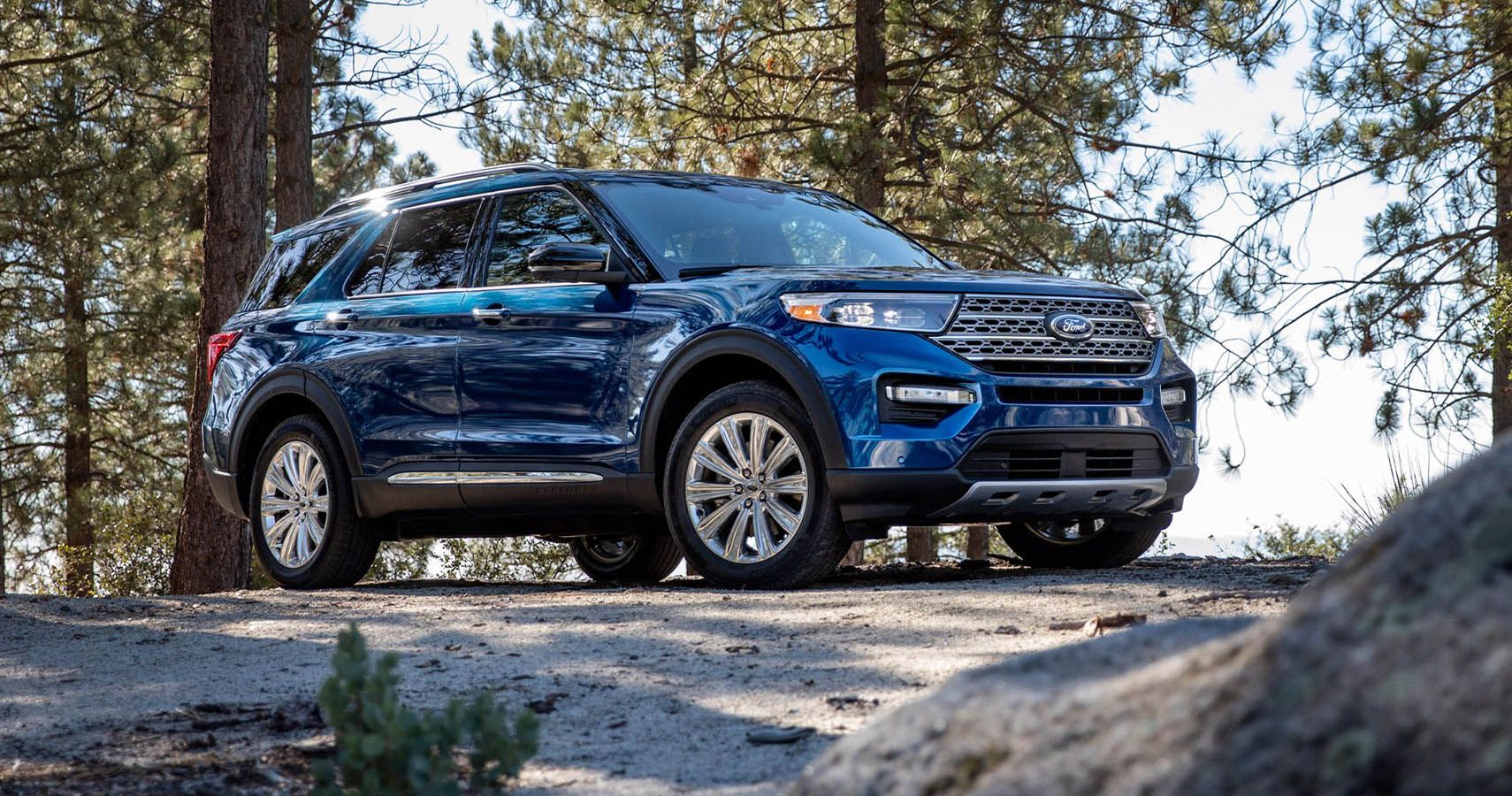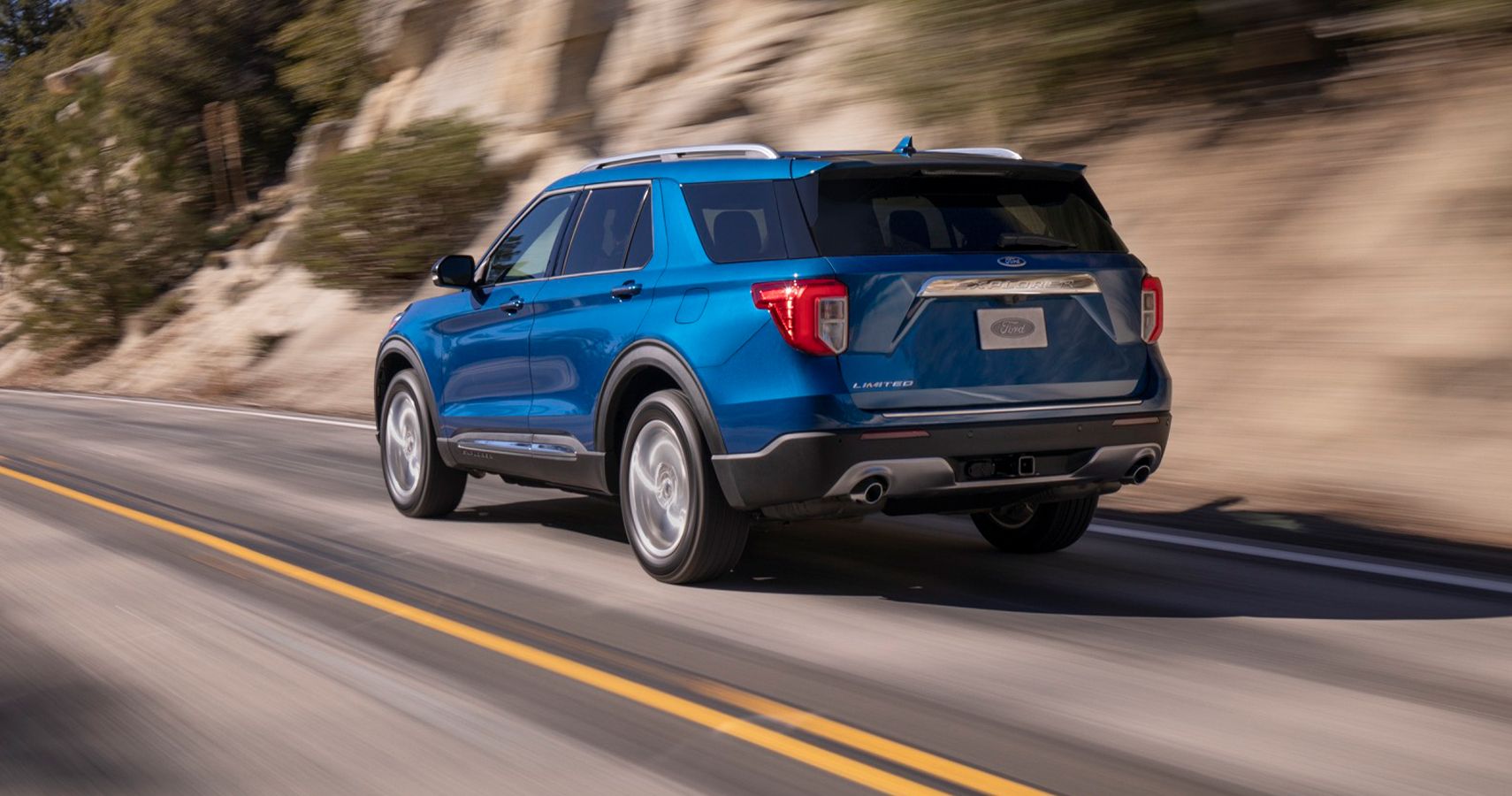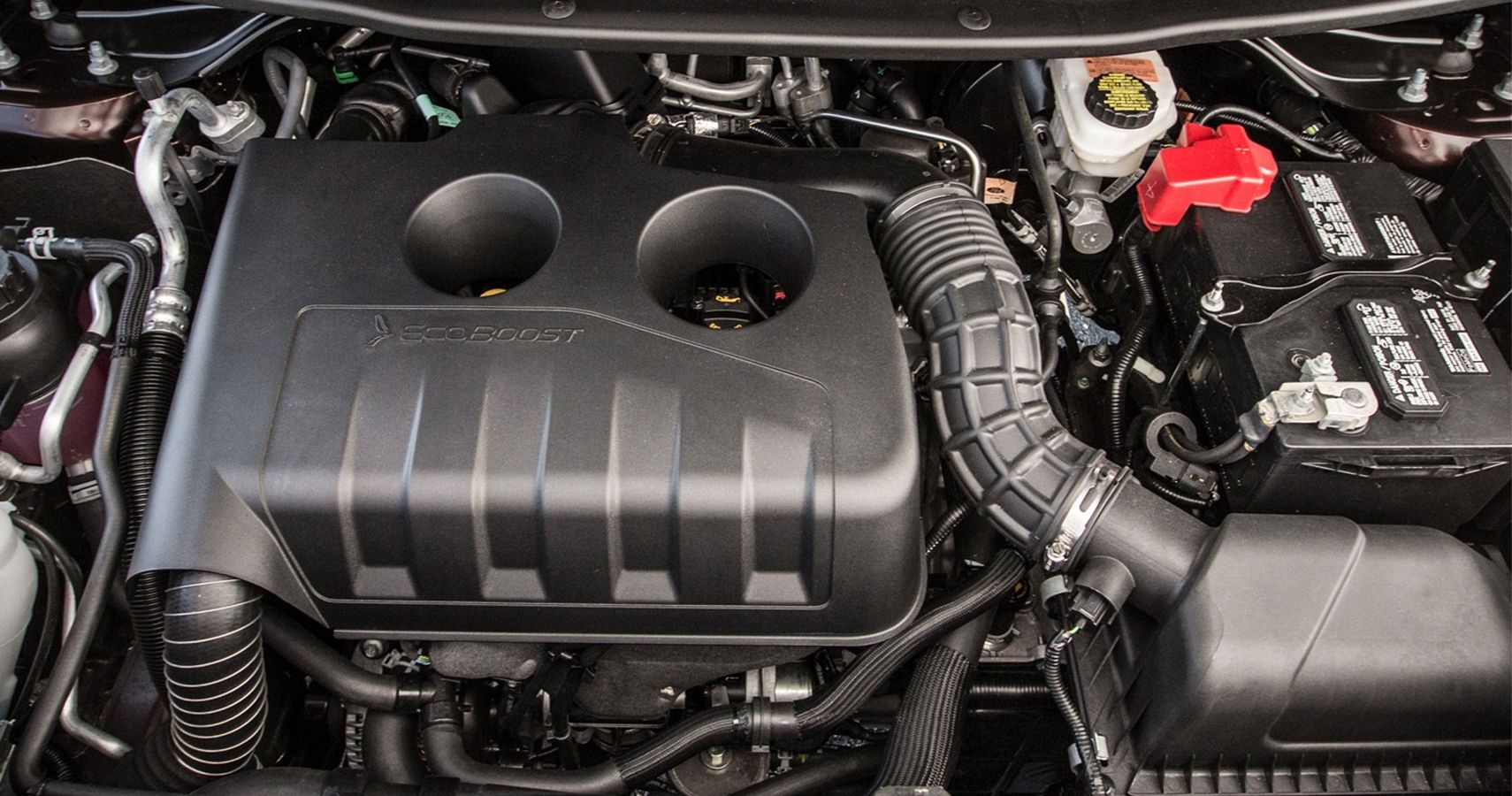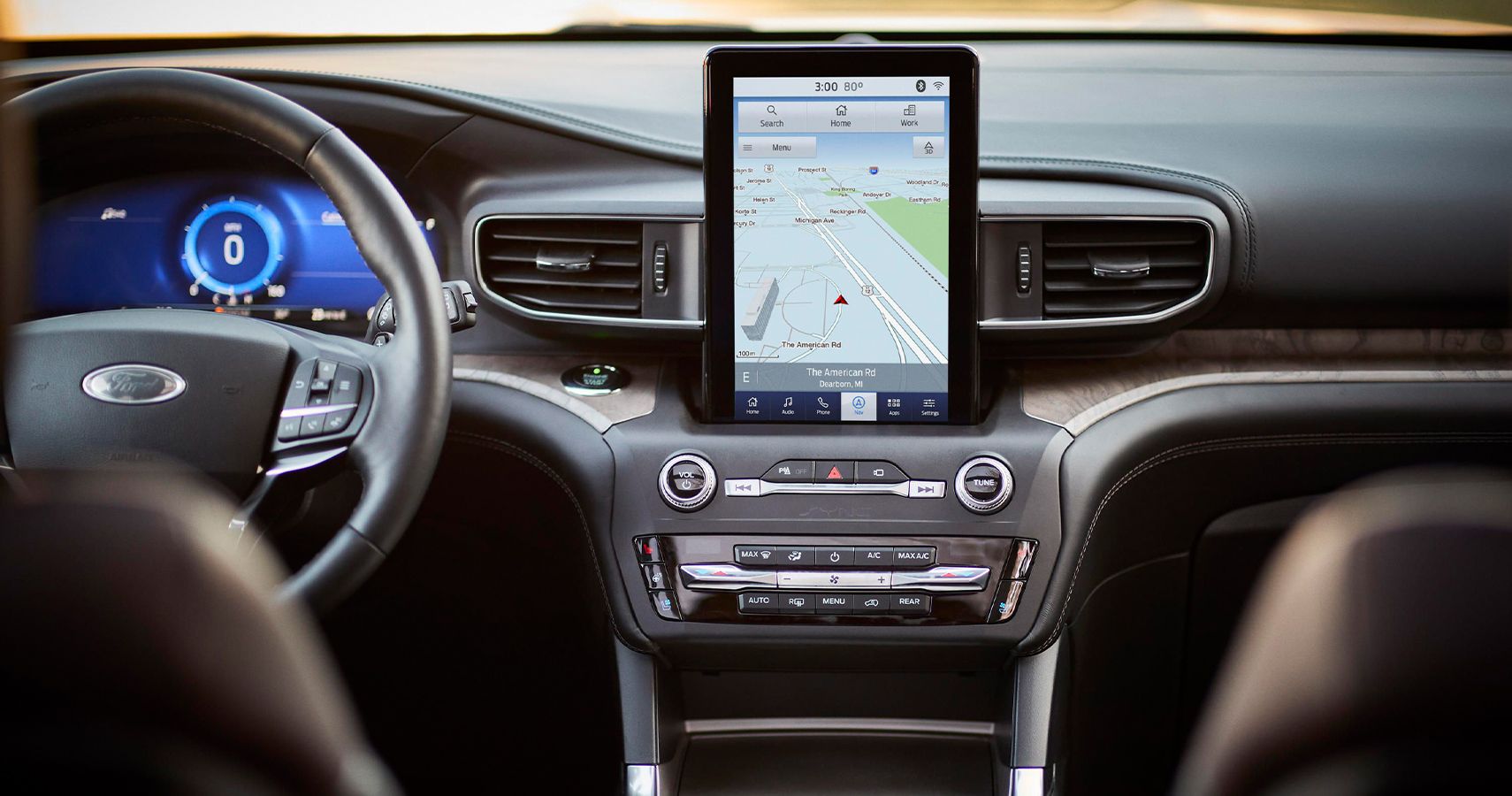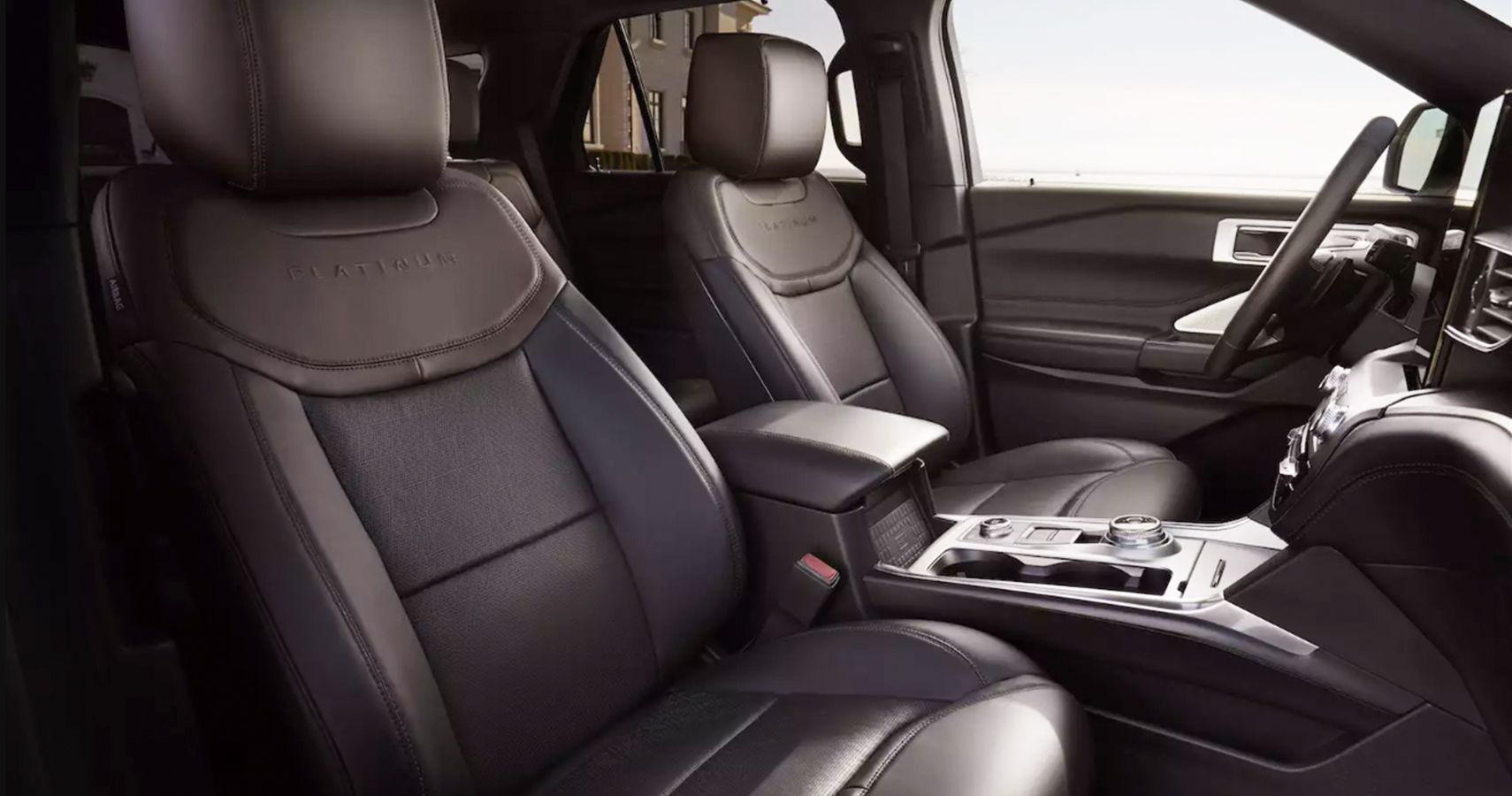Ford completely redesigned the interior and exterior of the 2020 Explorer, which returns to a rear-wheel-drive layout for its sixth generation. Modern creature comforts get a huge bump up yet the overall impression is that of a utilitarian SUV that leaves crossovers short on both ruggedness and luxury.
Exterior Styling
The 2020 Explorer has been entirely redesigned, though the underlying form can be traced through from its outgoing 2019 model. The boxy SUV has become slightly more raked from just about every perspective, however, starting with a more angular front end complete with aggressive air intakes, a larger grille, and narrowed headlights. The hood integrates better into larger, more aggressive fender flares while the side doors have received more aero lines tracing back and up from the front wheel arches.
The exterior lines all serve to highlight that this model is new in every regard. Even the A and C pillars edge in at the top for a more sporty feeling. Meanwhile, at the rear, the tailgate and window have become slightly more compressed as the haunches have been bulked up in an effort to emphasize that this is a rear-wheel-drive SUV. Large wheels and quad-tip exhausts fit into the options list, though they will undoubtedly be chosen more by city drivers than the rural consumer who will put the new generation Explorer through the paces it was designed to enjoy.
RELATED: 2020 JEEP GLADIATOR PREVIEW & BUYER'S GUIDE
Drivetrain & Mechanicals
The crucial aspect of the sixth-gen Explorer's redesign centers around the fact that Ford decided to utilize the rear-wheel-drive platform that it will share with the Lincoln Aviator. As Ford has trimmed down both its overall product lineup and the number of underlying platforms that those vehicles will be based upon (from nine to five), the decision to turn the Explorer into a crossover sharing front-wheel-drive characteristics with Ford's sedans must have been argued back and forth ad infinitum during development.
The choice to revert back to a RWD setup more in line with the Explorer's history (it was first released sharing a platform with the Ford Ranger then switched to a FWD layout for the third gen in 2011) helps point the way for the rest of the new model's mechanical features. The wheelbase has extended by six inches, though overall length is little changed.
Under the hood, the base 2.3-liter EcoBoost is a turbocharged inline-four unit that benefits from a power increase to 300 horses while torque remains the same as the current generation, at 310 lb-ft. That power is routed through an all-new 10-speed transmission and buyers will be given the option to choose between rear-wheel drive and all-wheel drive. The larger, 3.0-liter EcoBoost V6, meanwhile, cranks out 365 horsepower and 380 lb-ft of torque and is paired to the same drivetrain options.
For the base engine, towing is rated at 5,300 pounds (up from 3,000 on the current gen) while the larger V6 further increases that rating to 5,600 pounds. Like its smaller sibling, the Ford Edge, which has received an ST performance trim, the Explorer is slated for a more potent setup at some point in the future, while a hybrid gasoline-electric option will also fit into the mix.
RELATED: WHY FORD IS BRINGING BACK THE BRONCO
Interior & Tech
The Explorer's entire inside has been redesigned, as well, and the overall highlight has to be a massive infotainment system measuring 10.1 inches and oriented in portrait mode much like an iPad or the system used by Tesla. Industry standards like Apple CarPlay and Android Auto connectivity, wireless charging, and four USB outlets are complemented by a 110-volt and three additional 12-volt outlets.
Driver assistance features like pre-collision warning, automated braking with pedestrian detection, blind-spot warning, and automatic headlights all come standard, as do 4G LTE Wi-Fi and FordPass Connect, an app that connects the driver's smartphone with the SUV to allow for remote locking, unlocking, and starting.
Part of the decision to retain a rear-wheel-drive layout also means the Explorer enjoys an improvement in interior space. Three rows of seating all benefit from increased roominess, and with the back two rows of seats folded down, standard four-foot sheets of plywood and drywall can be laid flat. A power liftgate and power folding seats are on the options checklist, and the rear's floor is even reversible from carpet to vinyl.
RELATED: 2020 FORD BRONCO IMAGES LEAKED IN DEALER MEETING
Pricing & Buying
Five trim packages—base, XLT, Limited, ST, and Platinum—will make up the model range. A base 2020 Explorer with empty checkboxes the whole way down the options list starts at $33,860. Pricing for the rest of the lineup has yet to be announced, but that sticker is an increase of $400 over the outgoing model. The current generation in Platinum trim starts at $55,160.
Competition
Ford's critical decision to return to rear-wheel drive for the new Explorer means that its competitors are few and far between. The Jeep Grand Cherokee and Volkswagen Touareg both start around the same price depending on options, while luxury SUVs like Audi's Q5, which starts in the low-$40,000 range, will no doubt figure into buyer's decisions when opting for higher-spec trim packages.

